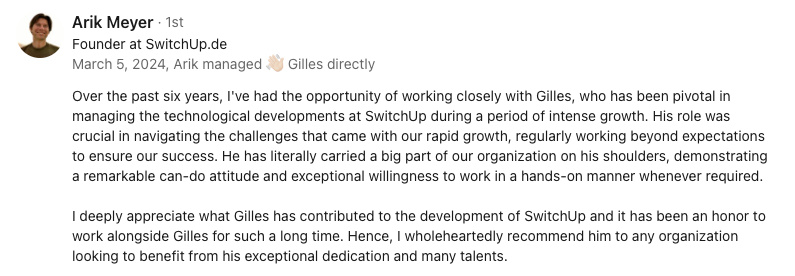Navigating Privacy in the Digital Era
Abstract:
Privacy has evolved in the digital age to encompass protection of personal information in technology. Challenges include data mining, AI, and IoT, which expand data collection but pose privacy risks. Governments and organizations have implemented regulations like GDPR and CCPA to address these threats. Technology, such as encryption and privacy-by-design principles, can also protect privacy. Balancing data access and privacy protection remains a challenge, but innovations like blockchain and differential privacy may offer solutions. Overall, regulations, technology, and collaboration are crucial for preserving privacy rights and creating a secure digital world.
what privacy means today
Picture this: A historian from the 19th century hops into a time machine and lands in our digitally connected world. What would they think about the concept of privacy we hold so dearly? They might find it shockingly different from anything they've known, where data privacy was as simple as a lock and key. Fast forward to today, and we’re juggling data mining, AI, IoT, and a slew of other tech acronyms that sound like they’re auditioning for a futuristic sci-fi movie.
In today’s world, privacy extends beyond an unlisted phone number or a sturdy front door lock. It’s about safeguarding personal information in a universe that’s perpetually online. The importance of protecting our digital footprint has never been more critical—with data breaches making headlines, and identity theft stories becoming all too common. We must ponder, “What does privacy mean now?”
Our efforts to preserve privacy must evolve in tandem with the tech that challenges it. Let's explore the nuances and the necessary shifts in our approach to guard our most personal data.
challenges in the digital era: data mining, AI, and IoT
Have you ever felt like your phone is spying on you? You mention a product casually—let’s say, a new kind of vegan cheese—and suddenly, your social media is flooded with ads for it. That’s data mining at work, and while it can be handy, it also raises significant privacy concerns. Today’s technologies, such as data mining, Artificial Intelligence (AI), and the Internet of Things (IoT), have transformed our world into an interconnected web, continually collecting data whether we’re aware of it or not. And here lies the challenge: how do we protect our privacy in such an environment?
data mining: the good, the bad, and the creepy
Keeping a digital diary of our preferences can make our online experiences more tailored and enjoyable. However, data mining isn’t just about getting to know us better—it’s about knowing everything about us. This extensive data collection amplifies risks to our personal privacy. Take the case of Target, which caused an uproar when it used customer purchase data to predict a teenage girl's pregnancy before her father even knew. Awkward, right?
AI: a double-edged sword
Artificial Intelligence holds the promise of revolutionizing many fields, including healthcare, finance, and even entertainment. But with great power comes great responsibility (thank you, Spider-Man). AI algorithms require massive amounts of data to learn and improve, meaning they often have access to highly personal information. In the wrong hands, this data can be misused, leading to privacy invasions that make your teenage diary look like small potatoes.
IoT: the interconnected reality
We live in an age where our fridge can text us when we’re out of milk and our thermostat knows our ideal “cozy” temperature. The Internet of Things is incredibly convenient but also a potential privacy minefield. Every smart device connected to the internet collects data—often without explicit user consent. This IoT-driven data collection presents a huge challenge: how do we secure these devices, and more importantly, the sensitive data they gather? In 2016, hackers exploited security flaws in IoT devices to launch a massive cyberattack, affecting much of the US internet. Yeah, it was pretty disruptive (and that’s putting it lightly).
As we wade through the nuances of data mining, AI, and IoT, one thing becomes glaringly clear: balancing technological advancement with privacy protection is no small feat. Each step forward can open new doors to innovation, but also to challenges we must be prepared to tackle. It’s like walking a tightrope with a laptop in hand—thrilling but precarious.
regulatory measures: GDPR and CCPA
Let’s talk about the alphabet soup of privacy regulations that govern our online activities. If you’ve navigated the tech waters lately, you’ve likely encountered GDPR and CCPA, two acronyms that have become synonymous with data protection. These regulations aren’t just legal jargon; they represent significant steps toward safeguarding our personal information from misuse.
GDPR: the European enforcer
The General Data Protection Regulation (GDPR) might sound like a dull bureaucratic term, but in reality, it's a muscle-flexing piece of legislation from the European Union aimed at drastically changing how organizations handle personal data. Since its inception in 2018, GDPR has placed stringent requirements on businesses worldwide, not just within Europe. The regulation mandates explicit consent for data collection, the right for individuals to access their data, and the infamous “right to be forgotten” clause. Violation can cost companies up to 4% of their annual global revenue or €20 million—whichever is higher. Talk about a financial shocker!
The real challenge? Compliance isn't as easy as flicking a switch. Organizations must rethink their data practices, invest in robust security measures, and maintain meticulous records. Plus, let’s face it, no one wants to be the company making headlines for a GDPR breach.
CCPA: the Californian crusader
The California Consumer Privacy Act (CCPA), often dubbed the "American GDPR," brings similar stringent data protection mandates to the Golden State. Effective from January 2020, the CCPA provides Californians with rights to know what personal data is being collected, the right to delete that data, and the right to opt out of its sale. Not to mention, businesses must display a “Do Not Sell My Personal Information” link on their websites. It's like GDPR’s cousin but with that West Coast flair.
Like GDPR, implementing CCPA isn’t a walk in the park. Organizations need to create infrastructure to manage, track, and secure data while ensuring transparency and user control. Keeping up with this can feel like running an obstacle course—except with legal consequences instead of muddy clothes.
Both GDPR and CCPA are landmarks in the regulation of data privacy, aiming to mitigate risks in a world where personal information is a hot commodity. However, the path to compliance can be peppered with challenges. Still, these regulations are crucial for creating trust and transparency with users, an effort well worth the hurdles.
technological solutions: encryption and privacy-by-design
So, how do we combat the potentially unsettling world of unauthorized data access and breaches? Enter the dynamic duo of encryption and privacy-by-design—two technological knights on a quest to safeguard our personal information.
encryption: the secret agent of data protection
Think of encryption as the James Bond of data protection. It takes your readable data (plaintext) and transforms it into a secret code (ciphertext) that can only be deciphered by someone with the right key. It's like sending a coded message that only a select few can decode. By implementing strong encryption methods, we can make it incredibly hard—even for the most determined cybercriminals—to get their hands on our personal data.
Encryption proves essential for securing sensitive information across various sectors, from financial transactions to healthcare records. It’s like having an impenetrable vault that keeps your secrets safe, rendering intercepted data virtually useless to unauthorized parties. And just like good ol' Bond, it keeps evolving to outsmart the bad guys continually.
privacy-by-design: embedding privacy into the DNA of tech development
If encryption is our secret agent, privacy-by-design is the wise old mentor who ensures that privacy principles are baked into technology from the get-go. The idea is simple yet profound: instead of treating privacy as an afterthought, we incorporate it into every stage of product development. This ensures that user privacy isn’t sacrificed at any point along the way.
Privacy-by-design can be fascinating. It involves a range of strategies such as:
- Data minimization: Only collecting the data that’s absolutely necessary. Why hoard data you don't need?
- Default privacy settings: Configuring services to optimize privacy settings from the start, sparing users the labyrinth of manual adjustments.
- Proactive not reactive: Anticipating privacy issues before they become problems, rather than scrambling for solutions after the fact.
By adopting these principles, we make sure user privacy isn’t just a checkbox on a to-do list but a core aspect of technology's very architecture. Imagine it as building your house with sturdy locks on every door and window right from the blueprint stage, rather than adding them after a break-in. It’s about creating a tech environment where users can feel safe and secure from the moment they step in.
In a world where data protection feels like an arms race, it’s heartening to see solutions like encryption and privacy-by-design leading the charge in safeguarding our personal data. Together, they serve as the cornerstone of a more secure digital future—minus the spy gadgets (although those would be cool, too).
the balancing act: data access vs. privacy protection
Finding the sweet spot between data access and privacy protection can often feel like juggling flaming torches while riding a unicycle—demanding, precarious, and a little bit thrilling. We all know the value of data in driving innovation and making informed decisions. Yet, the pressing need to protect personal privacy cannot be overstated.
Here's where the tug-of-war starts. On one hand, data access empowers organizations to deliver personalized experiences, improve products, and even predict consumer needs. For example, healthcare advancements rely heavily on data analytics to improve patient outcomes and discover new treatments. On the other hand, unrestricted data access can become a privacy nightmare, putting sensitive information at risk of exposure or misuse.
challenges in achieving balance
Striking this balance brings a host of challenges:
- Transparency versus utility: How transparent can we be about data collection without compromising the utility of the data? Think of it as trying to enjoy a magic show while knowing all the tricks—some of the wonder is lost.
- Security concerns: Robust data protection measures like encryption can sometimes make data less accessible and usable for legitimate purposes. It’s like building a fortress that’s so secure, even the king has trouble getting in.
- User trust: Users demand more control over their data, but at what cost? Enhanced privacy settings can limit the data available for analysis, potentially stifling innovation. Imagine driving a car with the emergency brake permanently engaged—safe, but hardly efficient.
Navigating this balancing act requires a nuanced approach. We need to adopt technologies and frameworks that protect privacy while maximizing the benefits of data access. It's about finding a middle ground where privacy isn't sacrificed on the altar of convenience, and innovation doesn't trample on personal rights.
Ultimately, achieving this balance is like preparing the perfect soufflé—delicate and definitely not something you can rush. But with the right ingredients—a mix of tech-savvy tools, smart regulations, and ethical considerations—we can whip up a solution that satisfies both privacy advocates and data enthusiasts alike.
innovative solutions: blockchain and differential privacy
When it comes to safeguarding privacy in our digital age, a few cutting-edge technologies are making waves. Two notable pioneers in addressing privacy challenges are blockchain and differential privacy. These approaches promise a revolution in how we secure and protect personal information.
blockchain: the decentralized guardian
Blockchain isn't just the buzzword behind cryptocurrencies—it's a groundbreaking method for ensuring data integrity and privacy. Think of blockchain as a digital ledger that's distributed across multiple computers. Each block contains a record of transactions, and once added, the data is virtually tamper-proof.
Here's why blockchain stands out:
- Decentralization: With no single point of control, it's incredibly challenging for bad actors to corrupt the data. It's like having multiple copies of a ledger spread across the globe, all constantly verifying each other.
- Transparency and Immutability: Once a transaction is recorded, it can't be altered. This ensures an unprecedented level of trust and transparency. Imagine a diary where nothing can be erased or falsified.
- Secure Transactions: Blockchain's encryption makes transactions highly secure, reducing the risk of data breaches. It's akin to a digital vault that's nearly impossible to crack.
By utilizing blockchain technology, we can create systems where data privacy and security are built-in, not bolted on as an afterthought.
differential privacy: the mathematician's answer
Let’s shift gears to differential privacy, an approach that’s all about adding statistical noise to data sets, making it difficult to pinpoint any individual’s information. It's like creating a smudged, yet still useful, version of a picture where you can see the big picture without identifying small details.
Here’s how differential privacy shines:
- Data Utility: The added noise ensures that data analysis remains useful without sacrificing individual privacy. It's like being able to study a forest without identifying each tree.
- Anonymization: Differential privacy techniques make it nearly impossible to trace data back to the individual level, thus protecting their identities. Think of it as a cloaking device for our personal information.
- Scalability: These methods are scalable and can be applied across various industries, from healthcare to social sciences. It’s like a versatile tool that fits in any privacy toolbox.
Both blockchain and differential privacy offer promising paths to enhancing privacy protections. They allow us to maintain the delicate balance between leveraging data for innovation and safeguarding our personal information. It’s a win-win, ensuring we don't have to choose between privacy and progress.
the path forward in the digital privacy landscape
After navigating through the maze of data privacy regulations, technological advancements, and the delicate balance between data access and protection, it's clear that our approach to digital privacy needs to be multifaceted and proactive. Regulations like GDPR and CCPA have set vital frameworks, but compliance alone isn't enough. Organizations must integrate cutting-edge technologies like encryption, privacy-by-design, blockchain, and differential privacy into their core practices.
As a Chief Technology Officer, I firmly believe that ensuring privacy is a collaborative effort that extends beyond the confines of any single organization. Governments, tech companies, and individuals must work together to create a secure and privacy-respecting digital environment.
In the words of a legendary superhero, with great power comes great responsibility. The same holds true for data privacy. It demands constant vigilance, innovation, and an unyielding commitment to safeguarding personal information. By embracing regulations, leveraging technological advances, and fostering a culture of privacy, we can collectively steer towards a safer digital future. Now, who said privacy couldn’t be fun?
You might be interested by these articles:
- Redefining Care: Datafication's Impact in Healthcare
- Enhancing Data Privacy with Federated Learning
- The AI Woke Police vs. The Irony Brigade: Can Robots Understand Sarcasm?
- Laughing with AI: Navigating the Ethical Maze of Artificial Humor in Branding
- The Symphony of Creativity in an AI-Powered World





